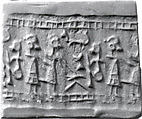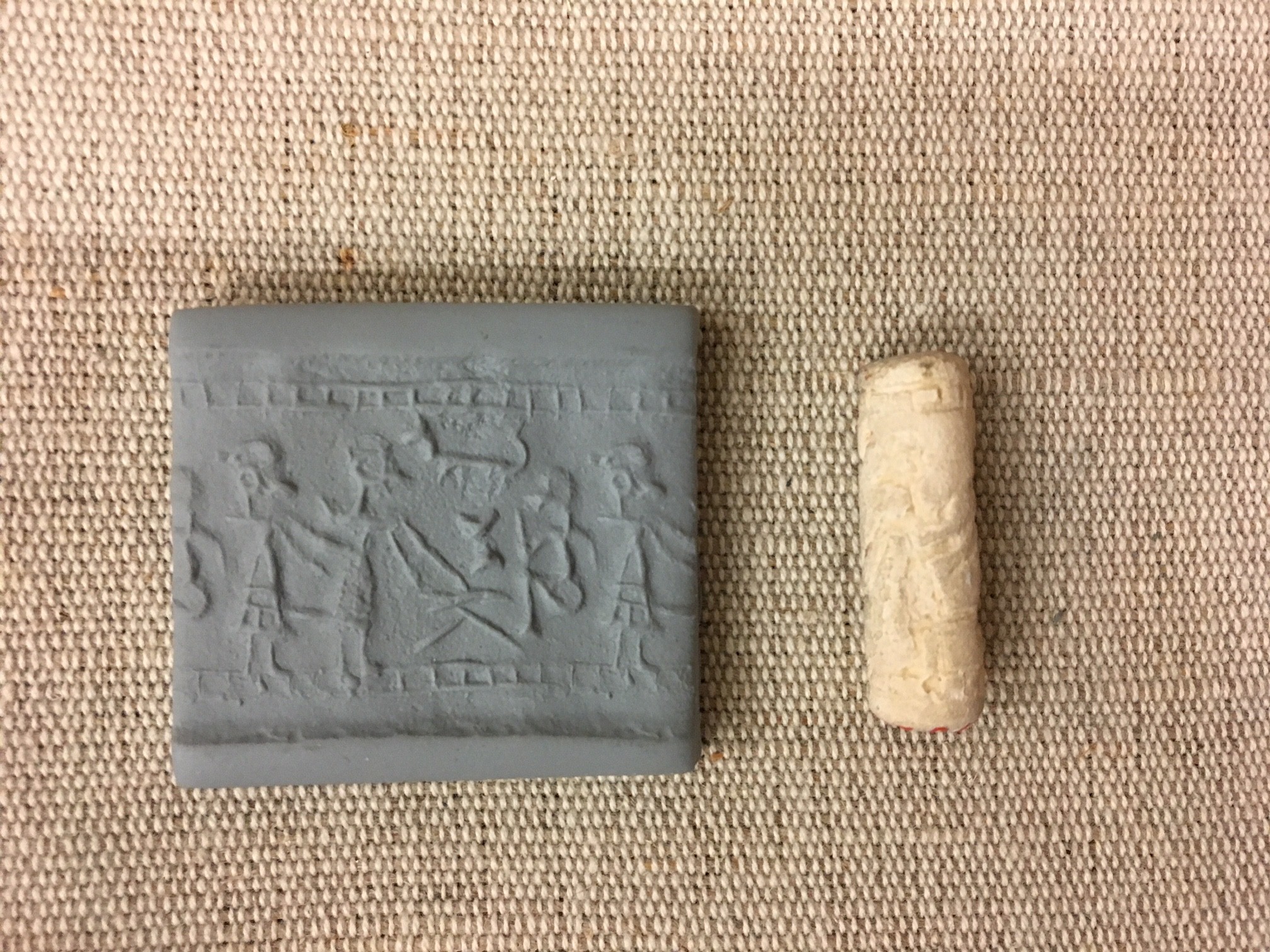Cylinder seal and modern impression: cultic banquet scene
Not on view
Although engraved stones had been used as early as the seventh millennium B.C. to stamp impressions in clay, the invention in the fourth millennium B.C. of carved cylinders that could be rolled over clay allowed the development of more complex seal designs. These cylinder seals, first used in Mesopotamia, served as a mark of ownership or identification. Seals were either impressed on lumps of clay that were used to close jars, doors, and baskets, or they were rolled onto clay tablets that recorded information about commercial or legal transactions. The seals were often made of precious stones. Protective properties may have been ascribed to both the material itself and the carved designs. Seals are important to the study of ancient Near Eastern art because many examples survive from every period and can, therefore, help to define chronological phases. Often preserving imagery no longer extant in any other medium, they serve as a visual chronicle of style and iconography.
This cylinder seal is made of faience. The modern impression of the seal is shown so that the entire design can be seen. The image depicts two attendants before a seated figure, who is poorly preserved; between them is a table, and above the table is a horned animal. The attendants wear triangular garments, probably skirts. The scene is framed at the top and bottom by a row of boxes.
The banquet scene on this seal is a common feature of Middle Elamite glyptic, yet the pointed headdresses and beak-like profiles of the attendants are quite unusual. Possibly these are meant to be supernatural creatures or demons – such figures are common in the bronzework of the first millennium B.C. commonly attributed to Luristan. The box border is also attested on Elamite seals of the 10th to 9th centuries B.C. Thus this seal probably dates no later than the 9th century, but possibly as early as the late 2nd millennium B.C.
This seal was excavated at Surkh Dum, a settlement site in Luristan in the Zagros Mountains of western Iran. It was part of a large hoard of objects buried beneath a doorjamb in a structure interpreted as a sanctuary; thus the objects were probably offerings made for a god.
Due to rights restrictions, this image cannot be enlarged, viewed at full screen, or downloaded.
This artwork is meant to be viewed from right to left. Scroll left to view more.



